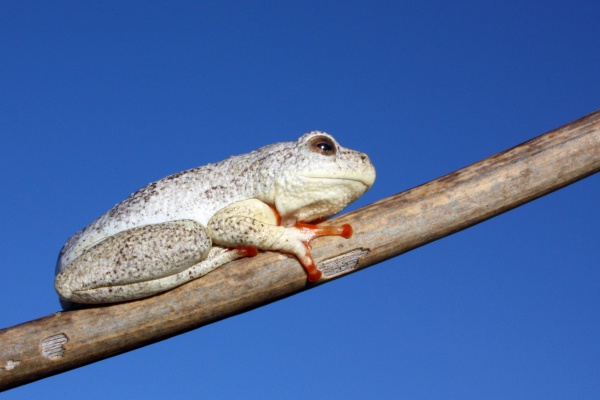Facts About Grey foam-nest tree frog
The grey foam-nest tree frog, also known as the southern foam-nest tree frog, is a fascinating member of the Rhacophoridae family. These frogs can be found in a variety of African countries, including Angola, Botswana, Kenya, Malawi, Mozambique, Namibia, South Africa, Swaziland, Tanzania, Zambia, and Zimbabwe. There are even occasional sightings in the Democratic Republic of the Congo and Somalia. These adaptable amphibians inhabit diverse environments, such as forests, savannas, shrublands, grasslands, marshes, farmlands, and urban areas.
Scientifically named Chiromantis xerampelina, these frogs are arboreal and boast several unique features. Their toe discs and widely spaced outer fingers facilitate climbing. They can grow up to 90 mm in length and possess slightly bumpy, dry skin that changes color from white to brown based on temperature conditions. While they spend significant time on the ground, they are frequently spotted near human settlements, attracted by the presence of lights, water, and waste, which draw insects—their primary prey.
One of the most remarkable aspects of the grey foam-nest tree frog is its unconventional breeding method. The female lays her eggs on a tree branch, and multiple males participate in fertilization by creating a foamy nest using their hind legs. This practice, known as extreme polyandry, enhances the survival chances of their offspring compared to those fertilized by a single male.
These frogs are exceptional at adapting to dry climates. They employ several strategies to conserve water, such as uricotelism—a form of waste excretion that reduces water loss—absorbing water through their rectum, and having skin that minimizes water loss. Their skin color changes to regulate body temperature and further prevent dehydration, shifting from white to dark brown as necessary. Thanks to their highly efficient, water-resistant skin, they are often referred to as "waterproof frogs." During dry periods, they conserve water by tucking their less water-resistant belly skin beneath them and secreting a special mucus to seal any gaps.

 Zambia
Zambia